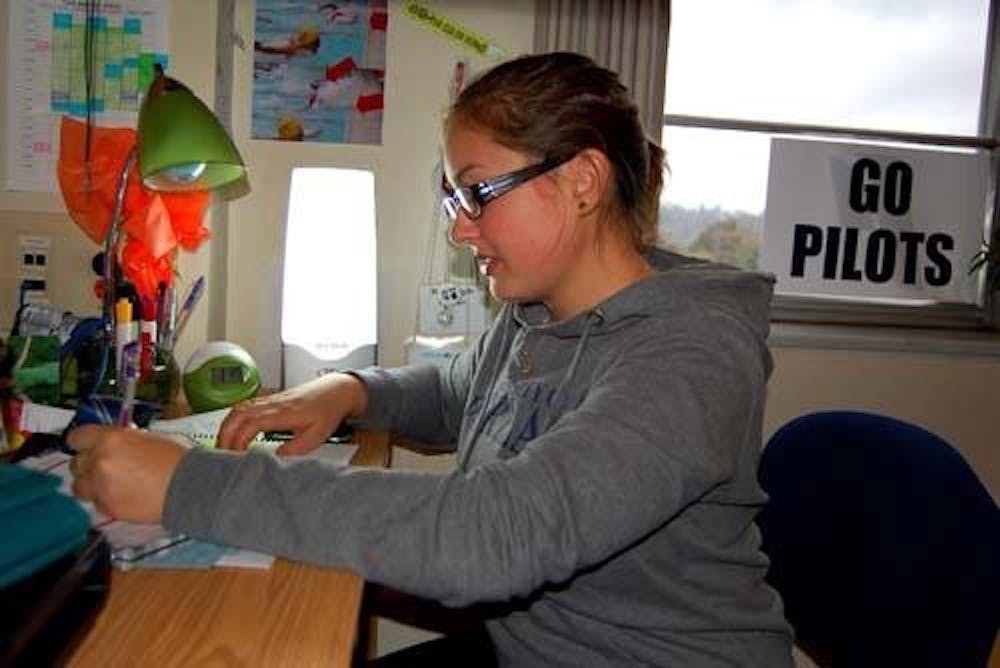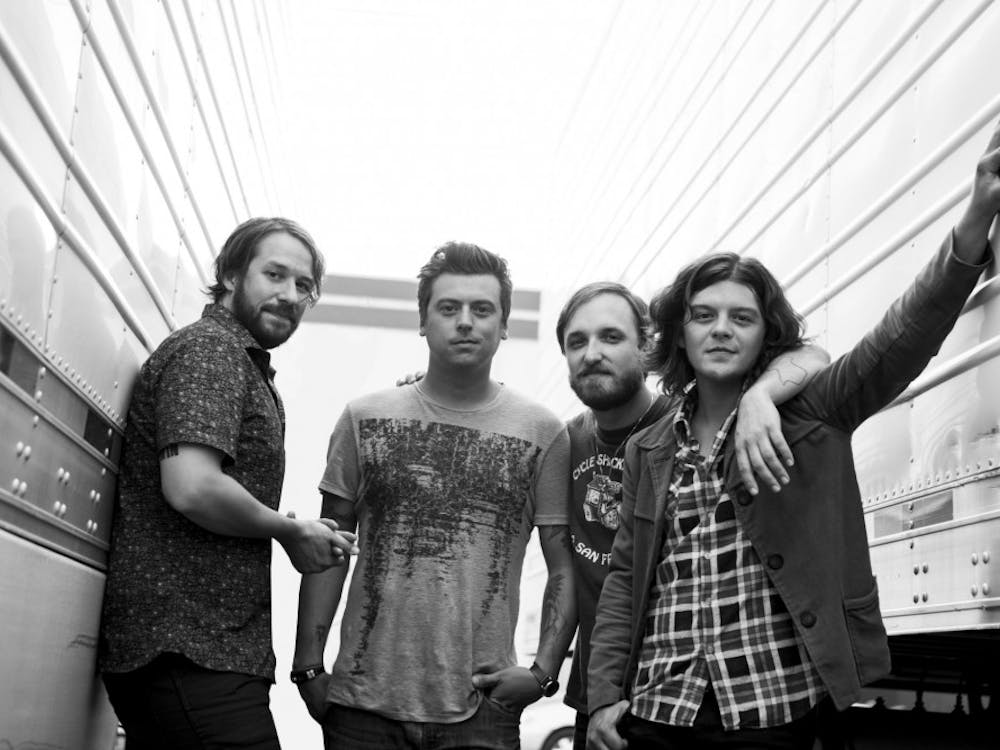Students who feel the effects of seasonal affective disorder use lamps that mimic sunlight to feel better
Sophomore Brenagh Sanford studies with a happy light on her desk to simulate natural sunlight during the darker months. Happy lamps can help people who feel tired or sad due to seasonal affective disorder. (Stephanie Matusiefsky | THE BEACON)
By Megan Walsh, Staff Writer walsh15@up.edu
Everyone who has spent a year in Portland knows that come October, it is time to break out the rain jackets, boots and umbrellas until April or even May. As the weather changes from bright blue skies to gloomy, gray days, many students experience their moods changing as well.
Some students experience the effects of seasonal affective disorder, also referred to as SAD, during these darker months. According to the American Academy of Family Physicians (AAFP), four to six percent of people suffer from winter depression, and another 10 to 20 percent may suffer from a mild case of SAD. But for those who do feel the effects of SAD, the use of lamps that mimic sunlight can help.
The amount of people suffering from SAD in Portland is likely on the higher end of the spectrum because of the lack of sunlight in the winters, said Dr. Patrick Bartos, University Health Center clinical psychologist.
"A lot of people are impacted by changes in the season," Bartos said. "I think most people experience some sort of changes during the winter. They may feel less energy and more sadness but it has to be at a certain level to be a true diagnosis."
Due to the prevalence of this disorder, companies have manufactured lights, commonly called happy lamps, that are meant to trick the body into thinking it is experiencing sunlight because the lights give off a full spectrum of wavelengths. This means the light from a happy light is the same type of light as in a natural environment, Bartos said.
"The idea is that by using the happy lights, you are mimicking natural sunlight," Bartos said. "I have heard anecdotally that it has been helpful for a lot of students."
Bartos said the lights help combat the effects of SAD, which include over-eating, over-sleeping, fatigue, depression, difficulty concentrating and social withdrawal.
Sophomores Brenagh Sanford and Allison Watson, who both experience mild cases of SAD, use these "SAD lamps," or happy lights to help them feel better in the darker months.
"I notice SAD throughout the winter when it's harder to wake up in a pitch black room, and when there are rare sunny days I feel so much happier," Sanford said. "I get down when it's cloudy and cold and it just highlights the stresses in my life."
The happy light produces a very natural light that is easy to study with and greatly improves the atmosphere of the room, Sanford said.
Watson uses her happy light for 30 minutes two to three times a week, depending on the weather. She said the happy lamp helps significantly.
"I am from Nevada, where there is like 300 days of sun a year, so when I said I was going to move to Portland, my parents were concerned," Watson said. "When I moved here, my parents got me the happy lamp."
Whether or not UP students personally feel the effects of SAD, many realize how likely it is to affect students in Oregon. Sophomore Farin Nikdel, a freshman workshop leader, has witnessed the effects of SAD firsthand with the members of her workshop group.
"I have students from Hawaii, Guam and California that have a hard time with all of this rain, and it's only been a few weeks into fall," Nikdel said. "A girl from LA told me she wants to just curl up and lay around when it rains, she has no motivation and her energy level is way down."
Students like sophomore Taylor Rudow, who is from Hawaii, have experienced the effects of dark winters, though she does not suffer from SAD.
"I definitely am lazier and down more often when I am in Portland than when I am back home," Rudow said. "I feel like a new person when I am back in Hawaii over Christmas break."
Nikdel understands how SAD is a definite problem in Portland. The campus is completely different and happier in the spring, she said.
"When it's raining, you're walking around with your hood covering half of your face and you are in your own little world rather than talking with those around you," Nikdel said. "Of course people are going to get down in that environment."








